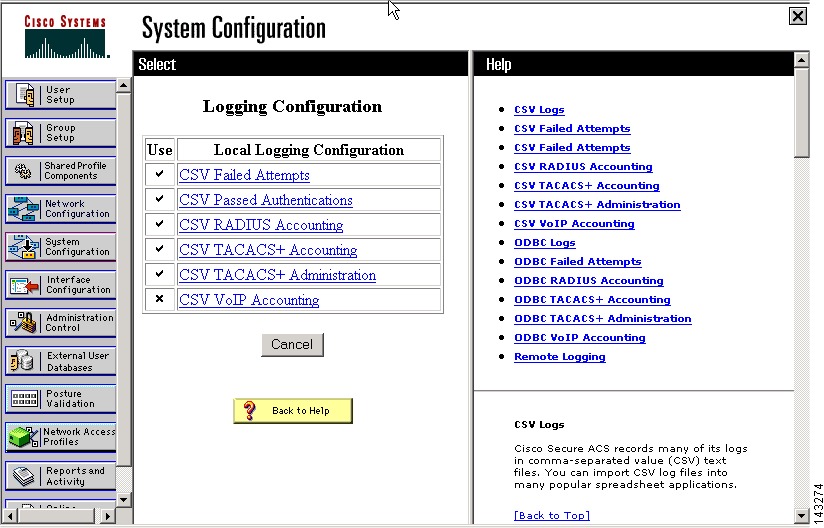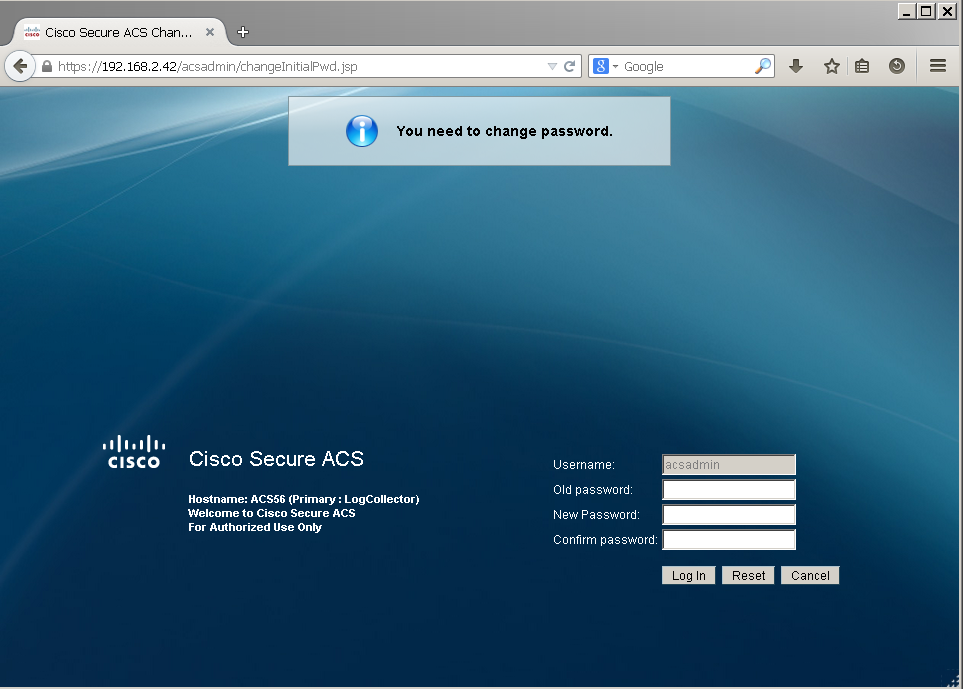

These statements are processed sequentially from top to bottom, based on the order of creation.
#CISCO SECURE ACCESS CONTROL SYSTEM ACS 5.3 TUTORIAL SERIES#
Traditional ACLs are composed of a series of permit or deny statements each with one or more test criteria, such as source and destination addresses and possibly protocols. In the following example, a static mapping is created for a server, and then outside users are allowed to access that global address for web and FTP activities. Netmask mask to be applied to remote_addr. Use local_addr with ACL statements for a crypto access-list statement, a nat 0 access-list statement, or a vpngroup split-tunnel statement. Network or host address remote to the PIX Firewall. Can be a number (0 to 65,535) or a literal, such as Use for ACL statement with access-group, the aaa match access-list, and aaa authorization commands. ACL command without an operator and port indicates all ports by default. Netmask mask to be applied to local_addr.Ĭomparison operator: lt-less than, gt-greater than, eq-equal, neq-not equal, and range-inclusive range.

Netmask mask to be applied to source_addr. Network or host address local to the PIX Firewall. Use for ACL statement with access-group, the aaa match access-list command, and the aaa authorization command. Use keyword ip to include IP, ICMP, TCP, and UDP. Choices include one of the keywords ip, tcp, udp, icmp, or an integer (1 to 254) representing an IP protocol number. Used with a crypto map command statement, deny prevents the traffic from being protected by IPSec in the context of that particular crypto map entry.

Default is to deny all inbound or outbound traffic. Used with the access-group command, deny doesn’t allow a packet to traverse the PIX Firewall. Used with a crypto map command, permit selects a packet for IPSec protection using the policy described by the corresponding crypto map command statements. Used with the access-group command, permit allows the packet to traverse the PIX Firewall. The access-list statement allows any outside host to access the global address for the web server using port 80 (acl_idĪCL name. In the following example, the static command creates a global address of 1.1.1.3 for a DMZ web server at 192.168.2.3. The show access-group command displays the current access list applied to interfaces. Pix(config)# no access-group acl_id in interface int_nameĪn access-group command always overrides the conduit and outbound command statements for the specific interface. Pix(config)# access-group acl_id in interface int_name Use the no form of the command to remove the entry. If the matching ACL statement is a Deny option or no matching statement exists, PIX discards the packet and generates a syslog message. If the matching ACL statement is a Permit option, PIX allows the packet. The ACL is applied to inbound traffic of the interface. Use the configuration mode access-group command to apply an access list to an interface. In the next sections, you see a variety of access list implementations. All exceptions created with access lists should conform to the security policy. Properly crafted access lists, applied to the proper interfaces, should allow for creating just the right exceptions to maintain acceptable security, while enabling activities that are required to further the organization’s mission. Also, by default, all traffic from the outside toward the inside, lower security to higher, is blocked except that permitted by access lists. By default, traffic can flow freely from inside to outside, or from higher security to lower, except that specifically denied by an access list. The PIX Firewall is designed around the default of absolute security, but it does allow for exceptions to be specifically configured using access lists. If internal users could be allowed to venture unrestricted into less-secure areas, bringing back whatever they find, and outside access to the network was absolutely forbidden, it might be possible to get by without using ACLs.


 0 kommentar(er)
0 kommentar(er)
